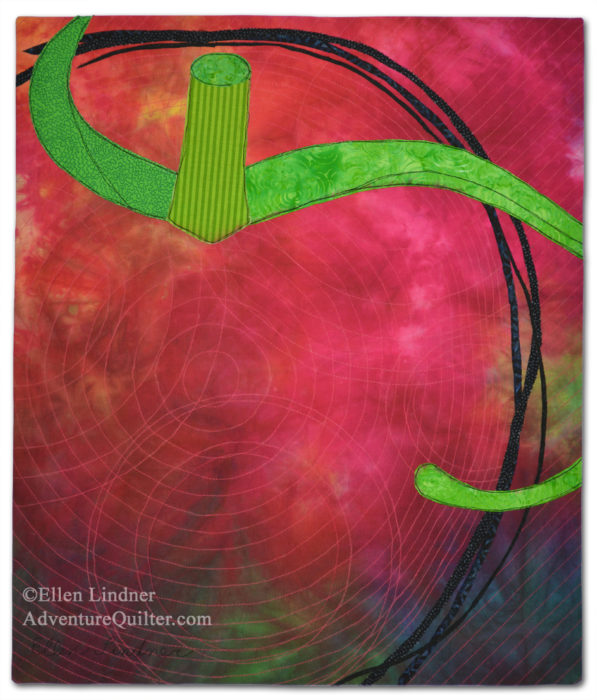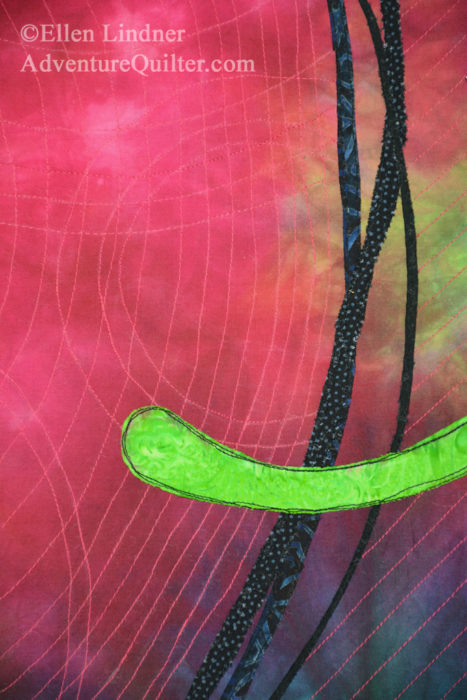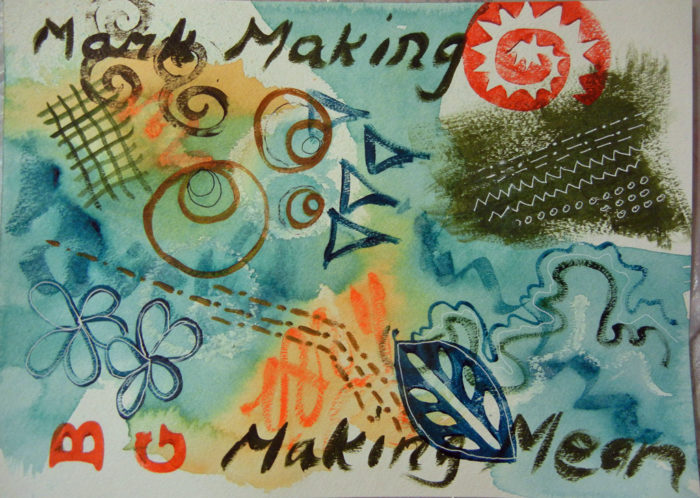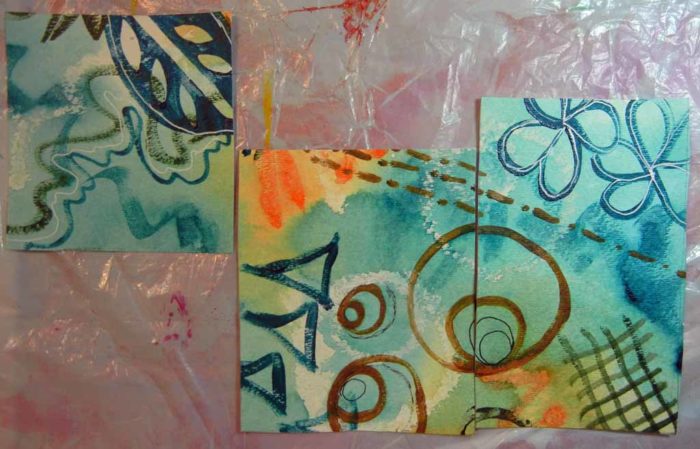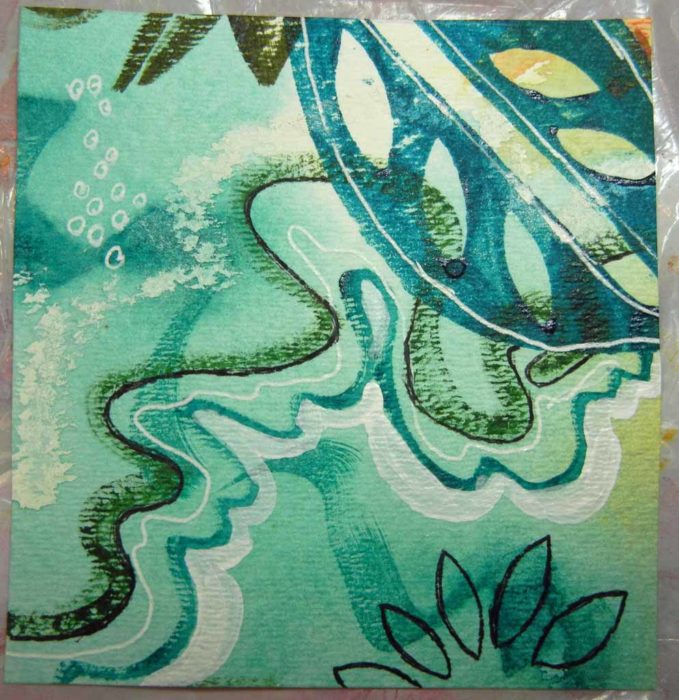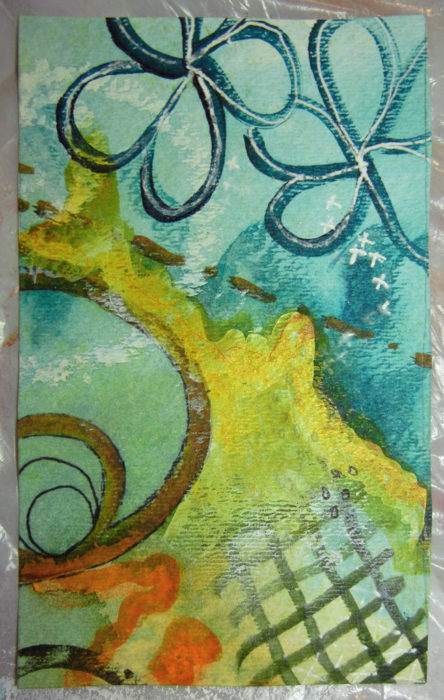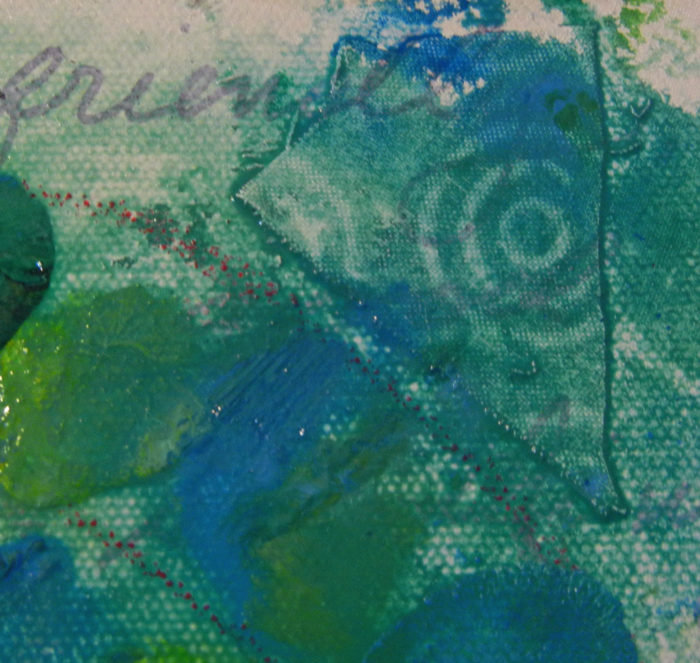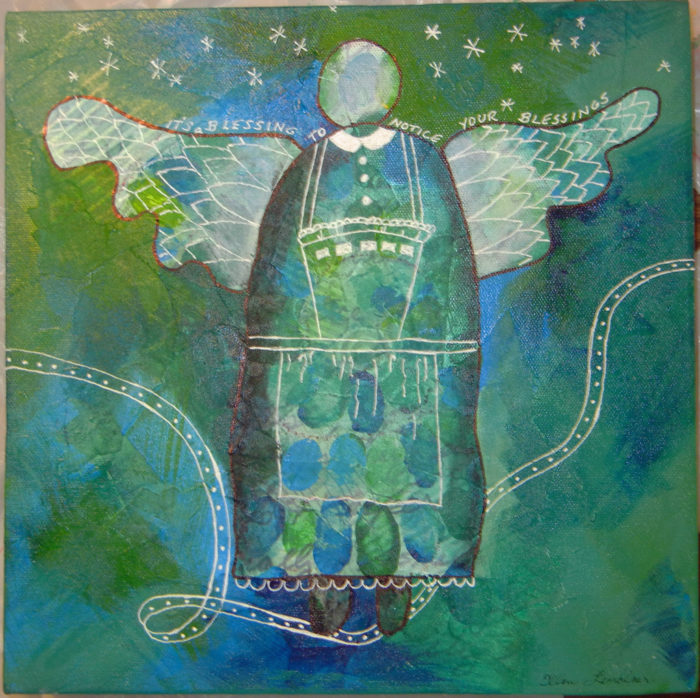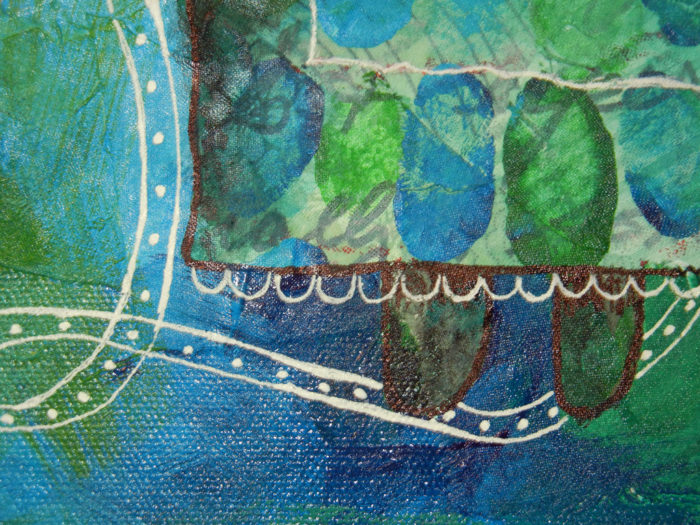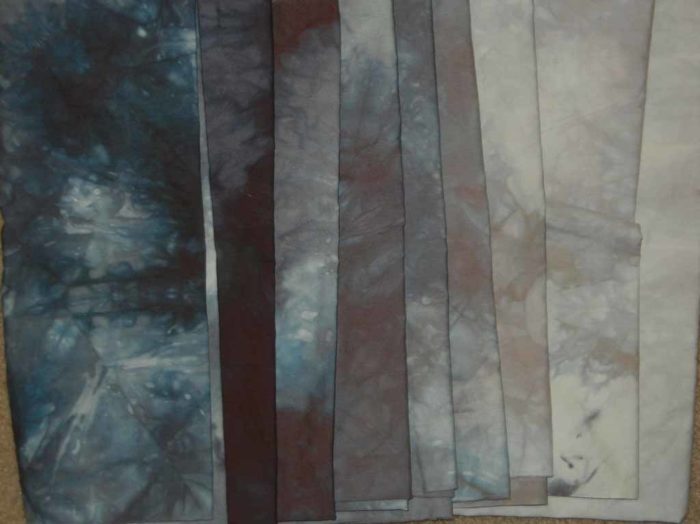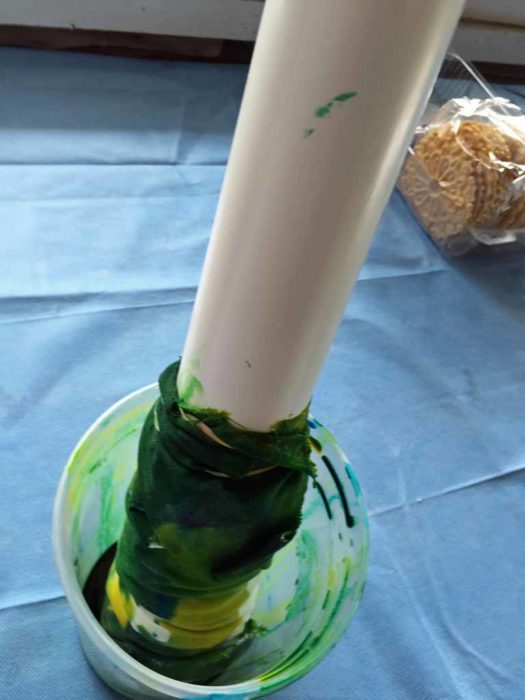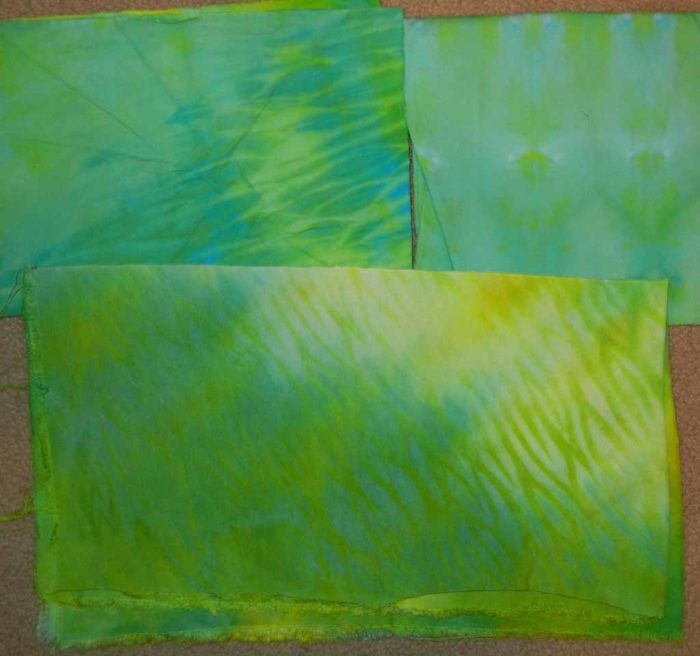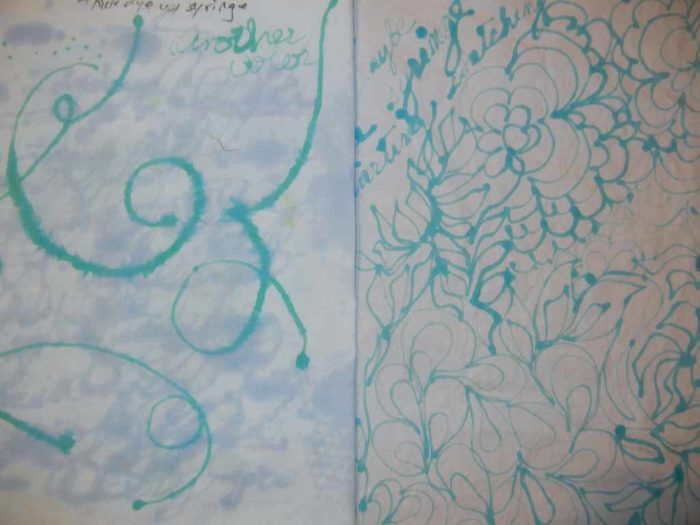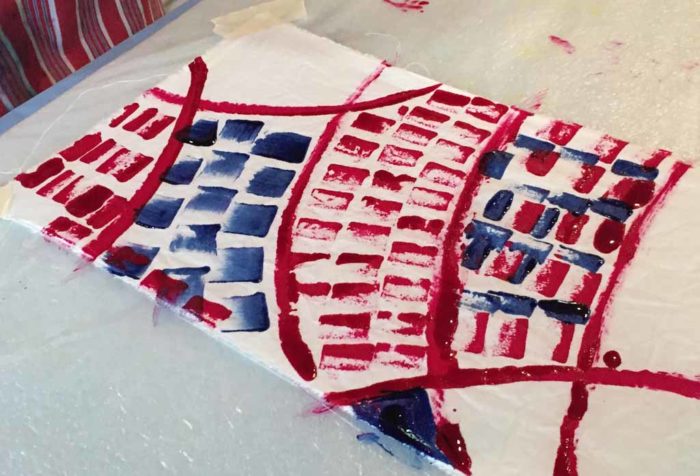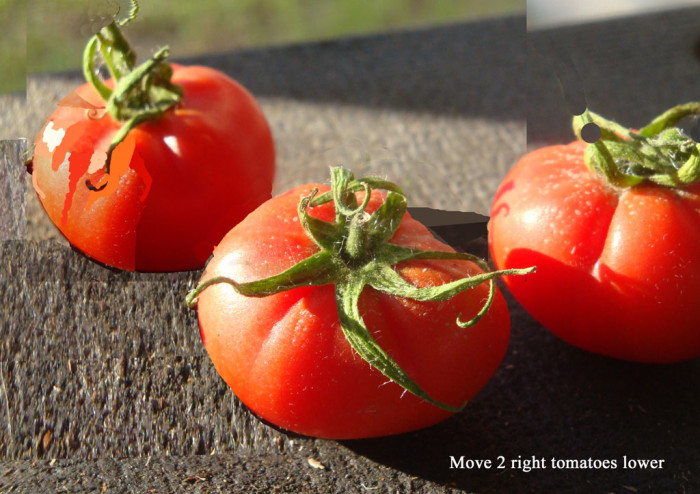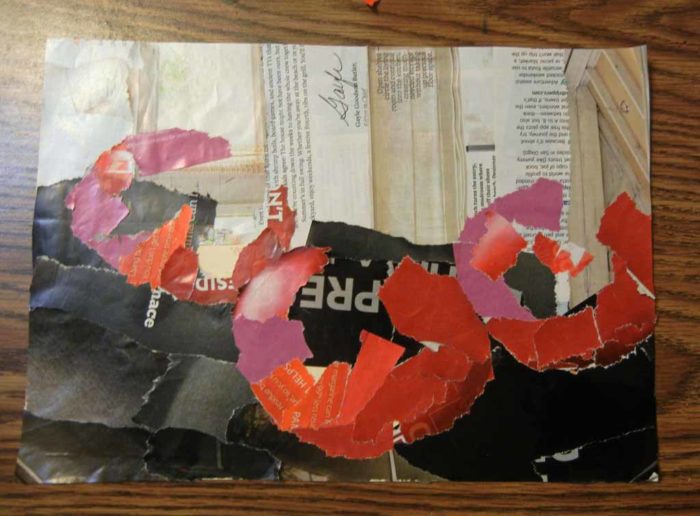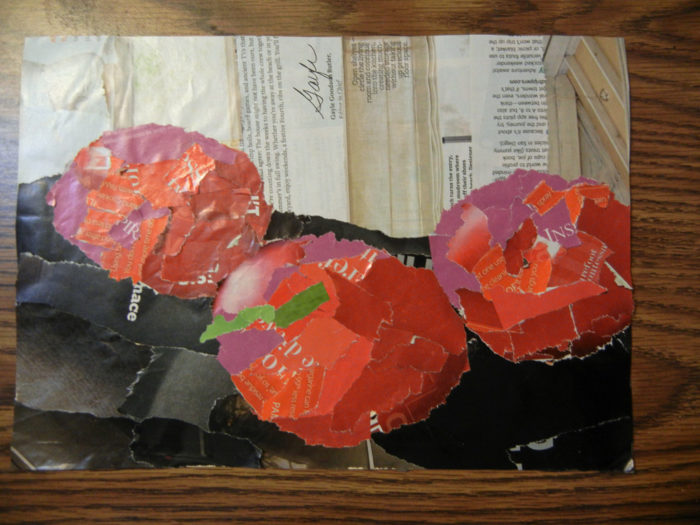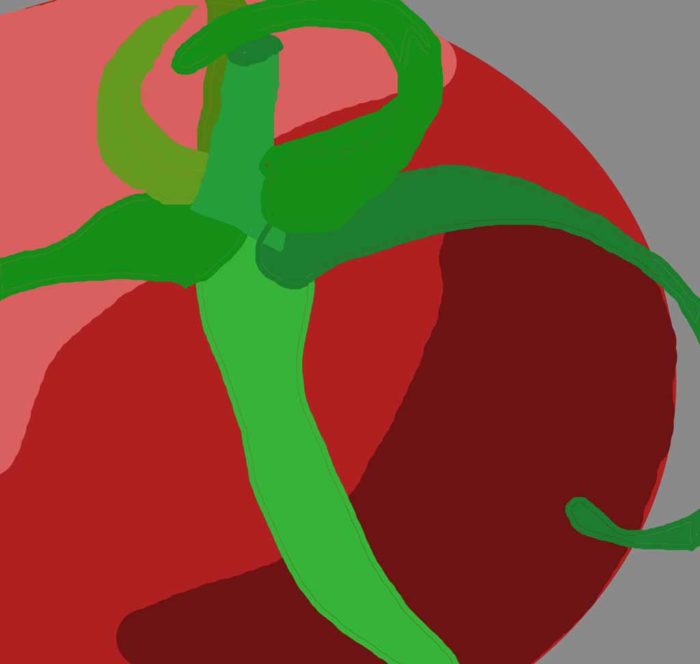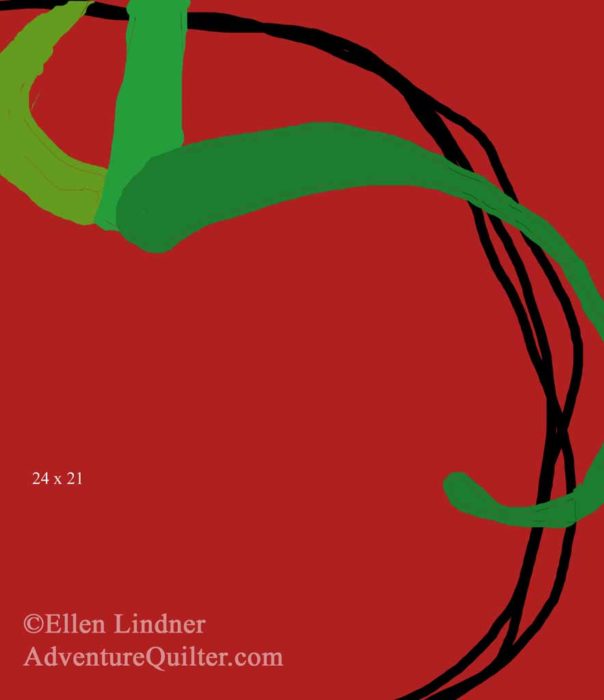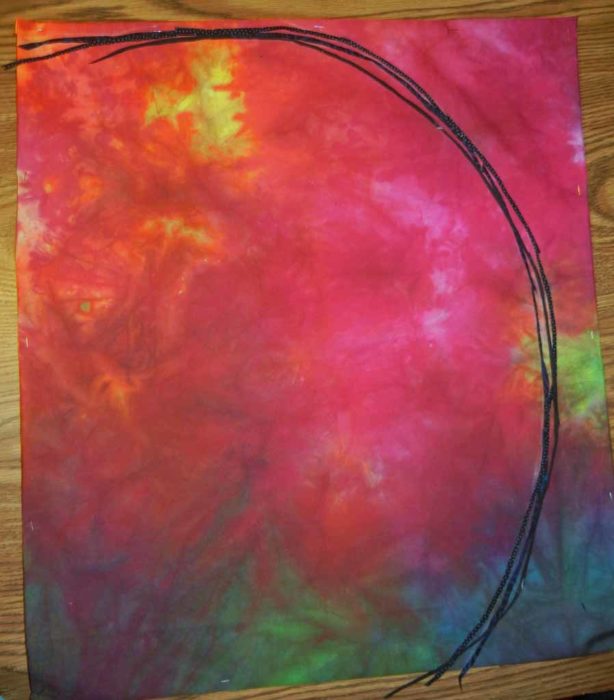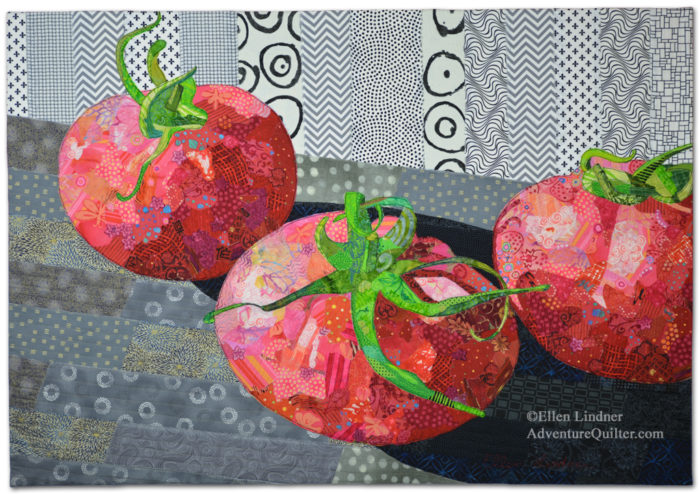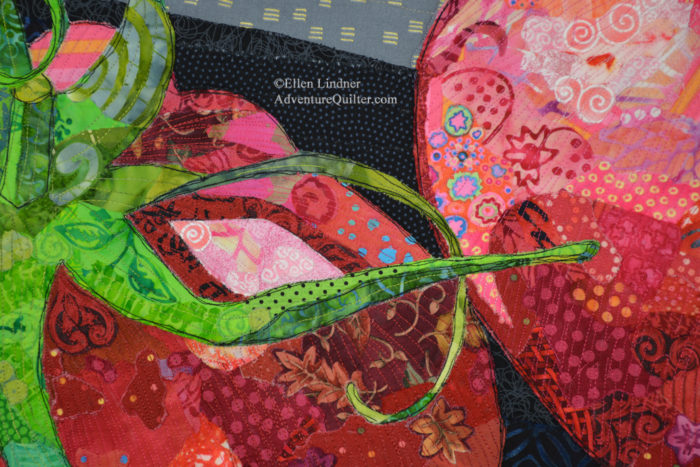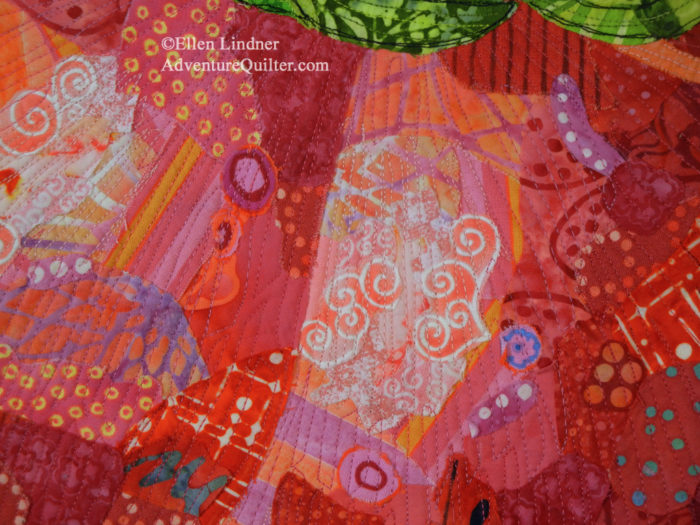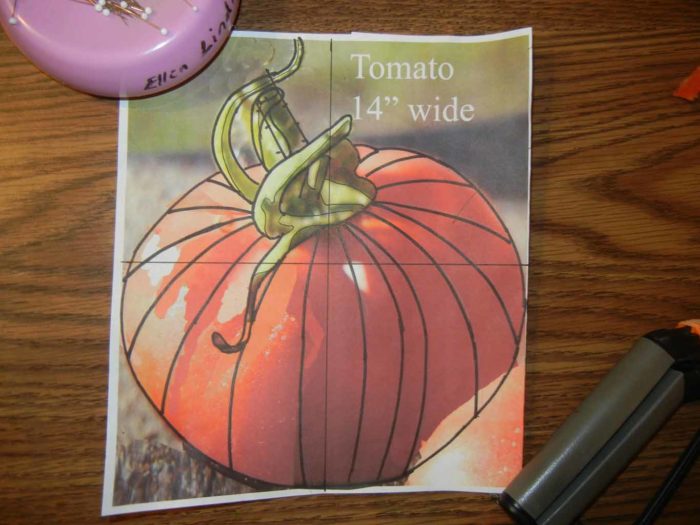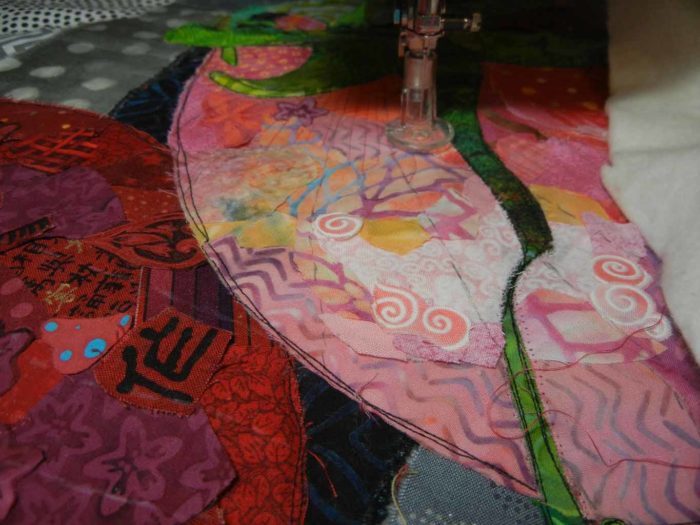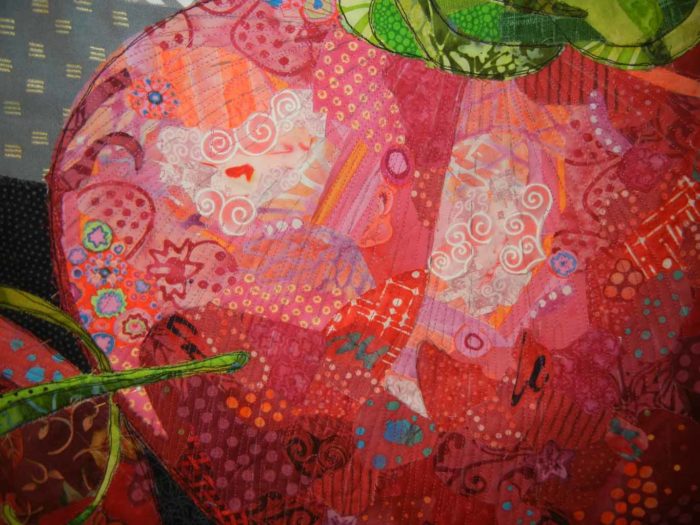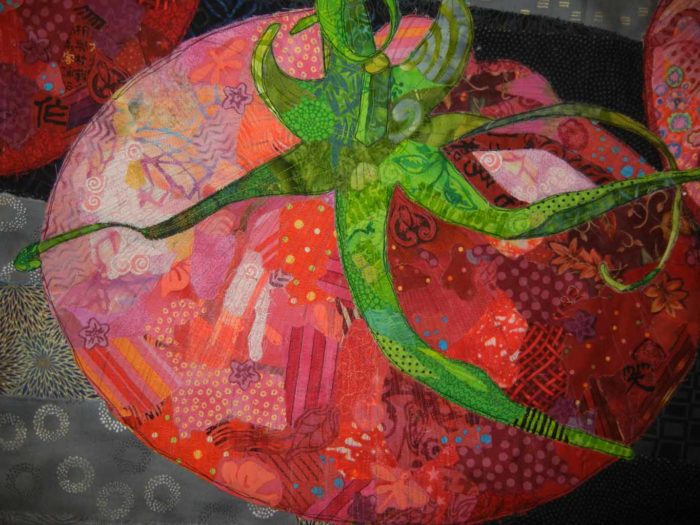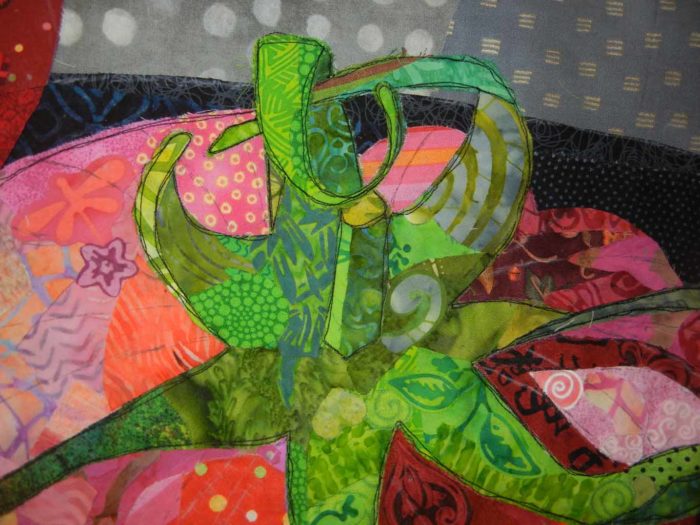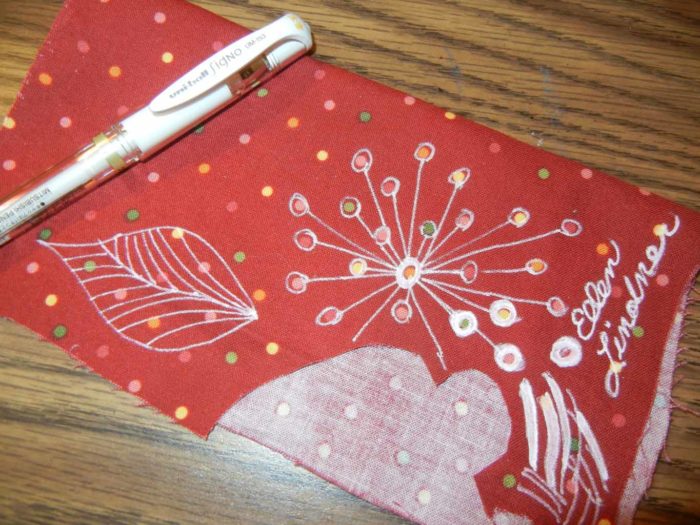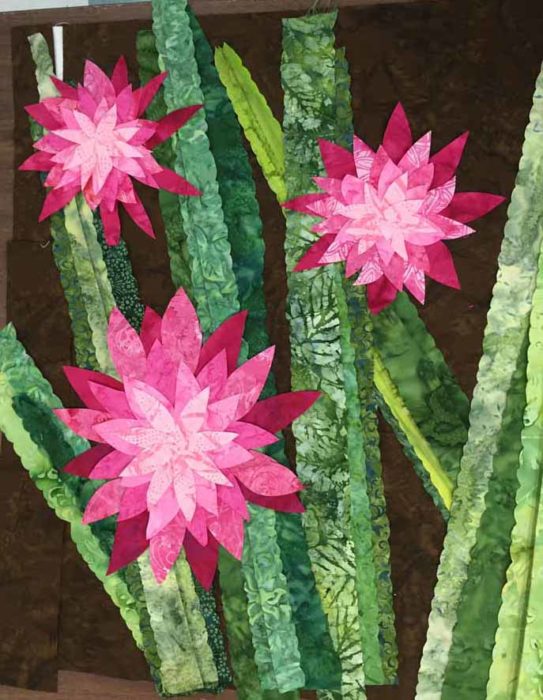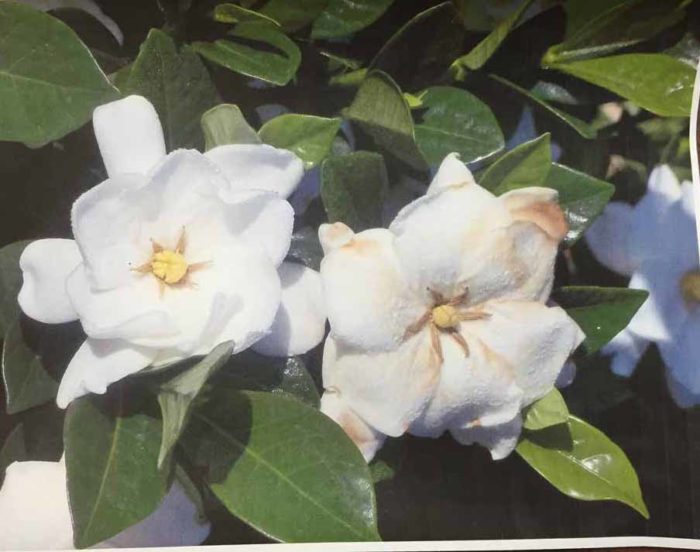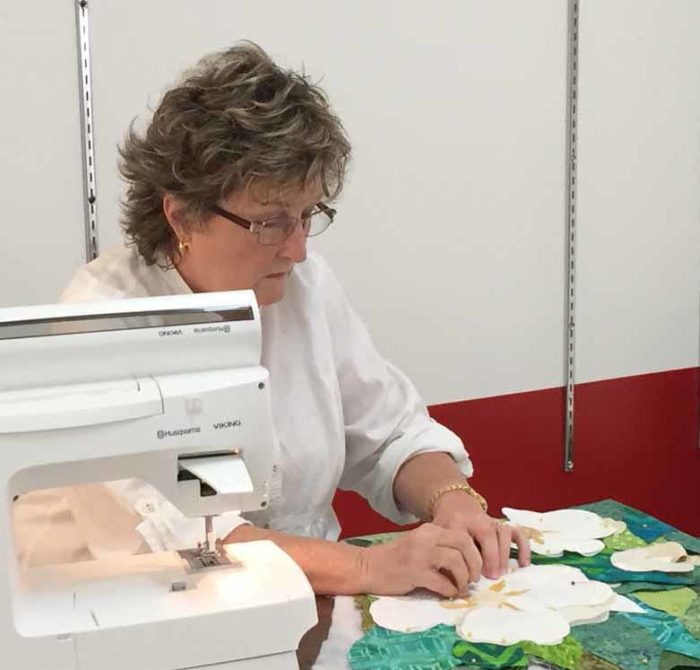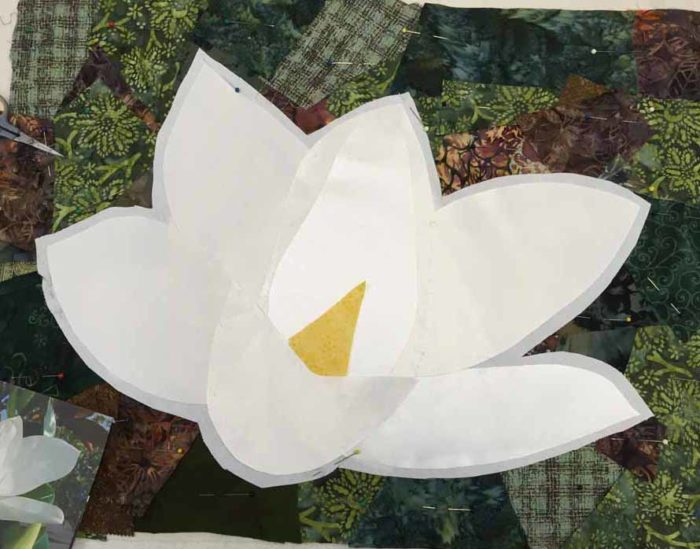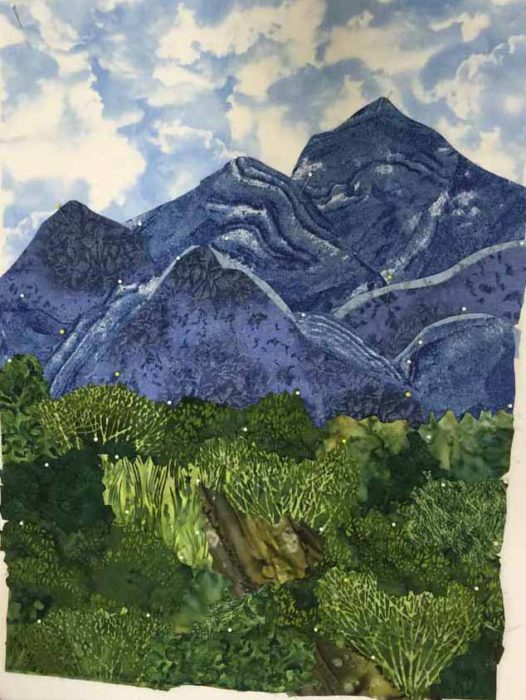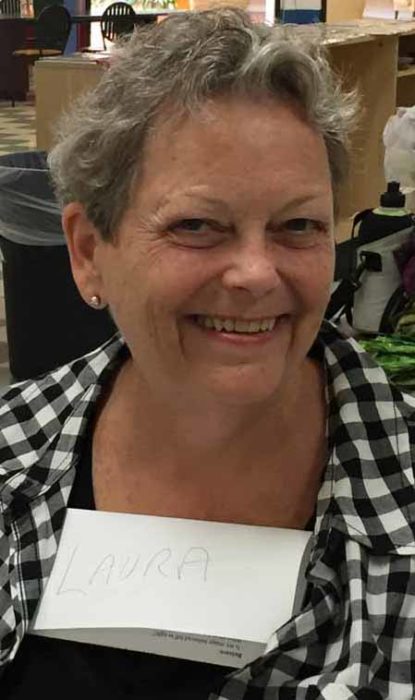Oh boy, have I been having fun! Remember my “Paint Mojo” exercise and the three sketches it produced? I loved one of them so much I had to immediately try to recreate it in fabric use it as the inspiration for a quilt. (Did you the notice the shift in my thought process there? I want to produce work LOOSELY. If I just copy a loose sketch it’s still copying. Not what I want.)
Here’s the sketch I was working from. (The yellow-orange is more orange in real life.)
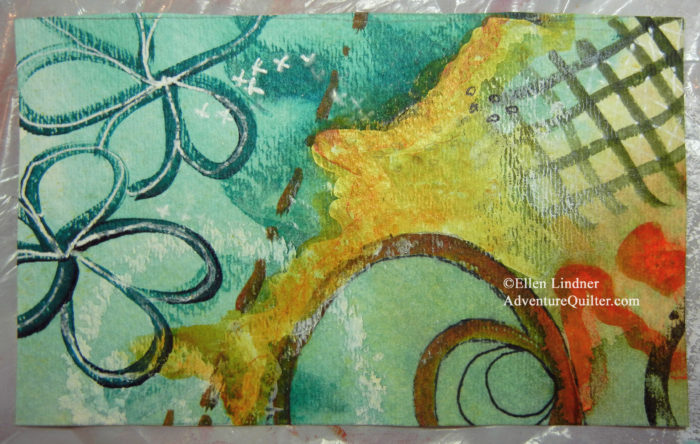
Since I wanted to work loosely I set some limitations for myself, so as not to accidentally copy. First, I studied the sketch closely and selected fabrics that exactly matched my colors. I also studied the composition, knowing that I wanted to emulate it, not actually copy it. And then I put the sketch away.
Working on a muslin base, I began to arrange and layer fabrics.
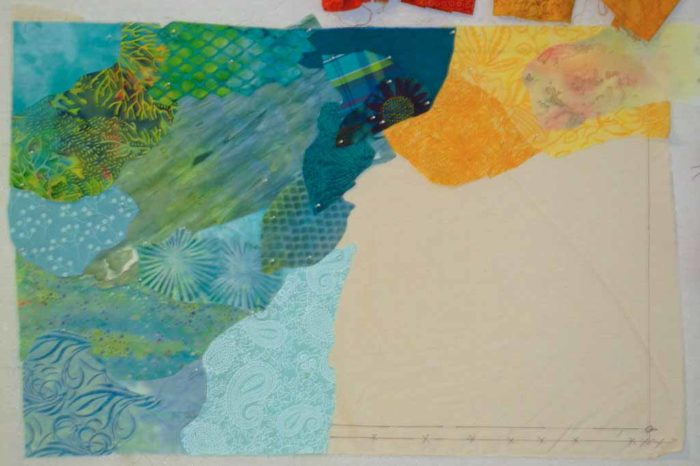
I knew I was deviating from the sketch and I figured that was a good thing. I switched the center shape to orange. I love orange with blue-green. (Although the orange is much softer than it appears in these photos.)


Once I had the muslin covered it was time to do A LOT of tweaking. I spent a good bit of time on the shape of the central orange element. I thought it was important for it to undulate and for the width to change in an interesting way. I also added a thin yellow line to the edge of it, in places.
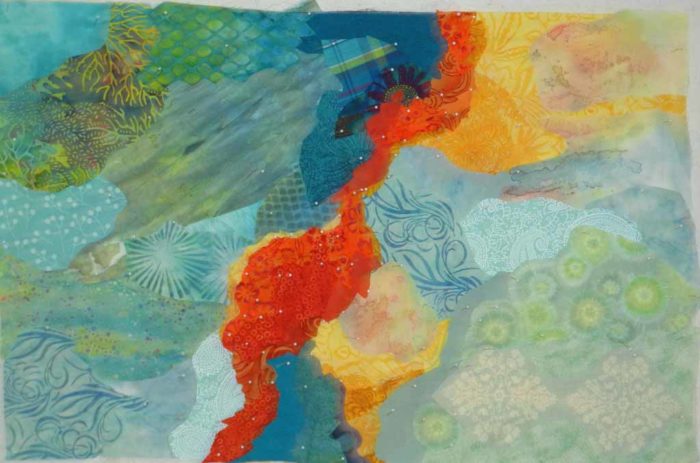
I completed the background without ever looking at the sketch again. And I was very happy with it. In my next post I’ll show you the addition of the graphic elements.
Ellen Lindner


